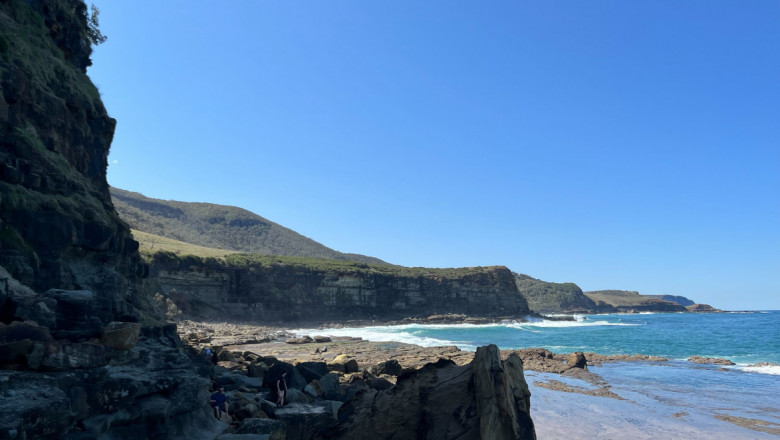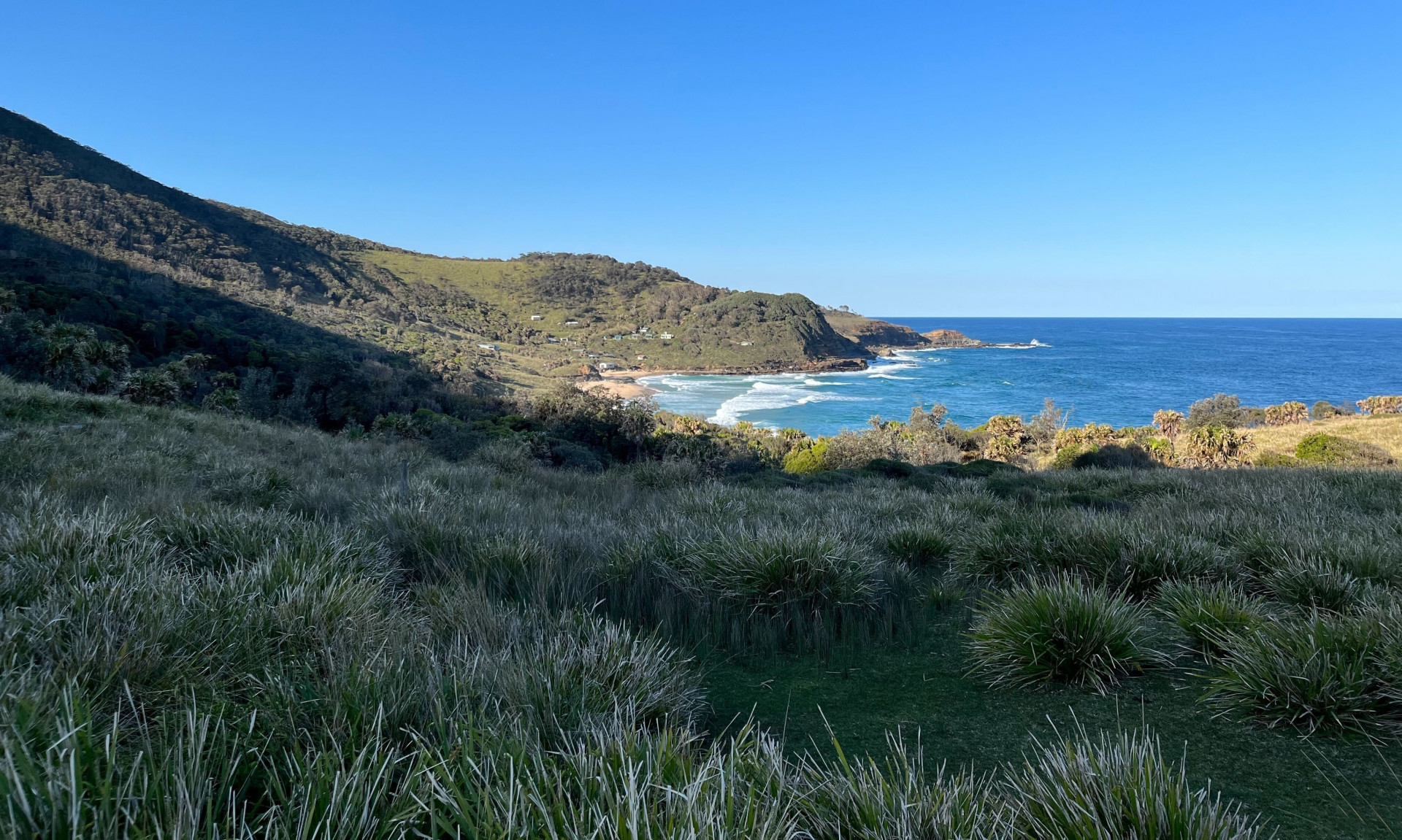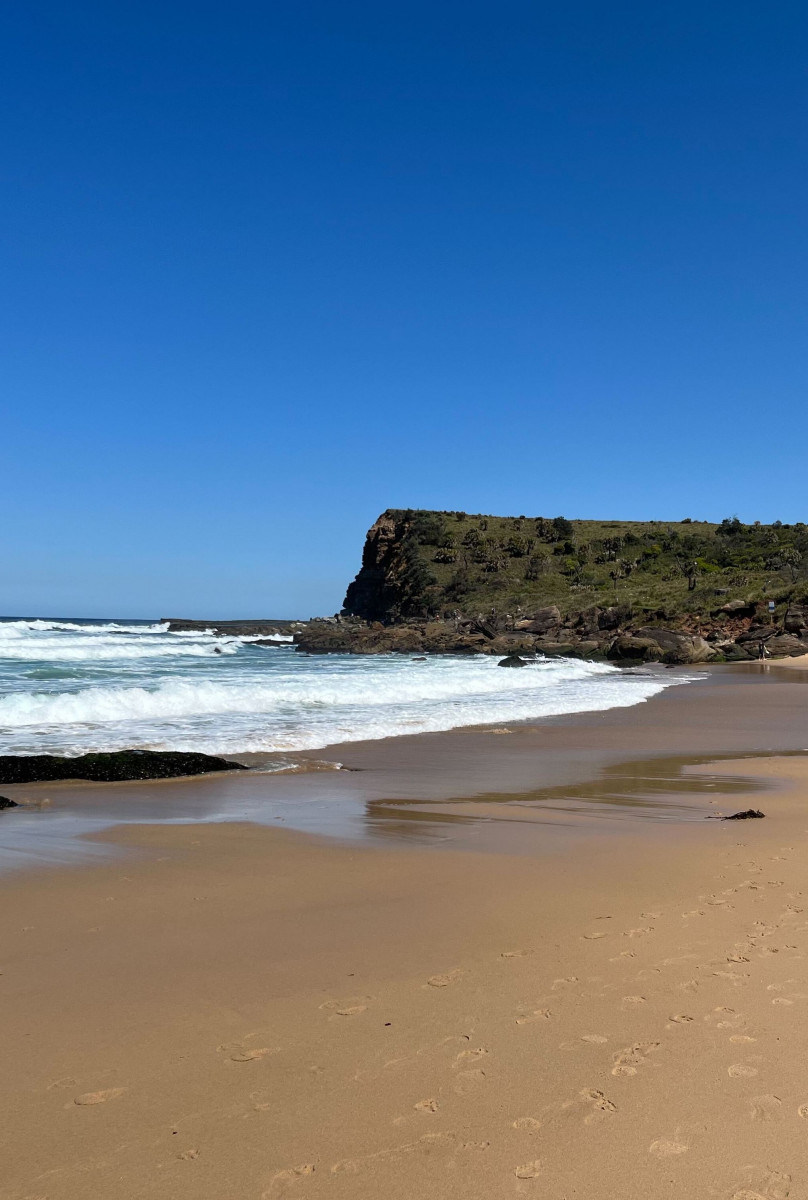
Shoreline cliffs at Royal National Park, New South Wales, Australia. (Photos by Joshua Rosenstein/Middlebury College)

Shoreline cliffs at Royal National Park, New South Wales, Australia. (Photos by Joshua Rosenstein/Middlebury College)
All around the globe, national parks highlight the beauty of the natural world. They also serve their communities in so many more ways, including conserving critical habitat and biodiversity, boosting economic returns through tourism, and aiding physical and mental health. These benefits are part of a legacy initiated by the United States and Australia, the first two countries in the world to establish national parks.
Yet, one often overlooked function of national parks in both countries is their preservation of Indigenous peoples’ culture and history through the maintenance of important sites. In this regard, America may still have more to learn from Australia’s example.

First listed in 1879, Australia’s Royal National Park is the second oldest national park in the world, behind Yellowstone in the United States. Royal sits only 32 km (about 20 miles) south of downtown Sydney, and spans 37,313 acres. It includes coastal landscapes, grassy woodlands, and eucalypt forests, while also teeming with unique vegetation and fauna.
Additionally, the park has a plethora of Aboriginal sites that contain rock engravings, piles of once-consumed shellfish known as shell middens, and hunting tools, among other archeological finds. These artifacts not only tell culturally and historically significant stories, but also show gradual advances in technology and eating habits over time, which helps debunk the colonizer myth that the Aboriginal way of life was unchanging over thousands of years.
The New South Wales (NSW) National Parks and Wildlife Services (NPWS) works closely with local Aboriginal groups to make sure the sacred sites are protected in a manner that respects Aboriginal heritage. In Royal National Park specifically, a conservation and coastal engravings project aims to safeguard the Jibbon Headland Aboriginal engravings. These engravings are some of the most intricate and clearly defined in the area, and they capture the local Dharawal people’s deeply rooted connection to the land.
Collaborating with the La Perouse Local Aboriginal Land Council, the NPWS built a boardwalk and viewing platform to prevent foot traffic over the engravings, which had previously worn down the site. Additionally, Aboriginal guides, known as Discovery rangers, take interested visitors on guided tours throughout Royal National Park to help explain the cultural significance of these sites. Finally, NPWS maintains proper upkeep of signage and encroaching vegetation around various Aboriginal sites within the park.

Although Royal National Park is one of the most well-known, visited, and protected national parks in New South Wales, the NPWS also conducts ongoing work in other national parks to preserve Aboriginal heritage. First and foremost, the NPWS works alongside local Aboriginal groups to manage the parks. These joint management programs ensure that Aboriginal peoples advise on any proposed plans, choose which stories are told about important sites, and retain access to the parks for cultural activities.
In some cases, the government has given land ownership back to Aboriginal peoples, such as with Uluru-Kata Tjuta in 1985 and vast areas in the Northern Territory in 1976. Another initiative includes the Connecting to Culture educational program. Through this program, Aboriginal youth living in urban areas travel to various Sydney national parks and learn about Aboriginal culture, identity, and practices from mentors in the area.
Likewise to Australia, Native American ties to land in United States national parks span back hundreds of generations. Unfortunately, discussions of national parks in the United States tend to gloss over how that land was acquired, which neglects and erases the thousands of years of Native American residence and the violence used by colonists when taking the land. Similarly, Native Americans do not have special access to most parks for cultural practices, and only some national parks allow hunting, trapping, and plant harvesting if granted permission.
While other measures to acknowledge Native American history have improved over the years, many of them still lag behind the standards set by Australia. For example, renaming proposals and more inclusive signage are becoming more common in United States national parks, but many Indigenous groups see these efforts as only the first steps toward meaningful change.
Yet, stories told from the Native American point of view are starting to rise in national prominence, which provides more accurate representations of our country’s history. In 2021, United States Interior Secretary Deb Haaland became the first Native American to serve as a cabinet secretary. Haaland has often cited her heritage as a member of the Pueblo of Laguna Nation when discussing her motivations for working for the White House. She has already used her position to expand the Sandy Creek Massacre National Historic Site which commemorates a historic massacre of Native Americans in Colorado.
These actions are all quite promising for a country that has mistreated Native Americans throughout its history. While the United States remains behind Australia in its protection and acknowledgment of Indigenous peoples in national parks, the country is slowly recognizing the need to reshape the historical narrative, and national parks are a great place to start telling these stories.